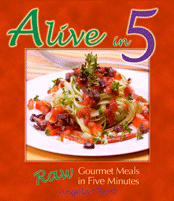Are You Concerned About A Safe Food Supply Too?
by www.SixWise.com
As of October 2008, new regulations require that country of origin labels (COOL) be put on beef, pork, lamb, chicken, goat meat, perishable agricultural commodities, peanuts, pecans, ginseng and macadamia nuts.
|

Nearly half of Americans said their confidence in the safety of the U.S. food supply has slipped.
|
COOL was largely intended to increase the sense of food safety and accountability to American consumers, but it appears to not have gone far enough.
While 73 percent of those polled by Consumer Reports National Research Center regard the overall food supply as safe, 48 percent said their confidence in the safety of the U.S. food supply has decreased.
Almost all of the respondents (83 percent) reported they were concerned about harmful bacteria or chemicals in food, while 81 percent were concerned with the safety of imported food. Said Urvashi Rangan, senior scientist and policy analyst at Consumers Union:
"The American public wants to know more about their food, where it comes from, how safe it is, and will vote with their dollars to support highly meaningful labels.
Whether that means that 'organic' fish eat 100 percent organic feed without contamination, or that people know which meat and dairy products come from cloned or genetically engineered animals, consumers want the government to ensure safety, quality and meaning in the food marketplace."
Should You be Concerned About the Food Supply?
Many are concerned that the new COOL regulations will not go far enough to protect food safety. While it's certainly a positive step to know where your food comes from, opponents say it will only act as a marketing tool in favor of U.S.-grown foods.
|
Eat REAL Food: Get Recipes From a Highly Recommended Cookbook, Alive in 5

In Alive in 5: Raw Gourmet Meals in Five Minutes, acclaimed raw chef Angela Elliott shows you how to whip up mouth-watering lasagna, stuffed mushrooms, broccoli in cheese sauce, apple pie, chocolate shakes, and more -- all in about five minutes, with easy-to-find whole-food ingredients that are good for your brain and your body.
Order Alive in 5: Raw Gourmet Meals in Five Minutes Now!
|
Still, this is good news for Americans wishing to avoid products from China or other specific countries, or who want to purchase foods grown closer to home. You may be surprised to learn, though, that a food labeled as "product of USA" may not technically be U.S.-grown at all.
Here's why some of the COOL regulations are deceptive:
-
If a product is packed in another country, it can still be labeled "product of USA"
-
If a store adds spices to a food or processes it in any way, it can be labeled "Made in USA" -- even if it was grown in another country
-
Processed foods do not have to be labeled, nor do foods used as ingredients in other products (such as pre-made salad mixes)
The premise of COOL also suggests that being able to buy foods from a particular country, such as the United States, will increase your safety. Is this true?
Perhaps not.
The U.S. Food and Drug Administration (FDA) only inspects domestic food production facilities once every five to 10 years, while foreign facilities get inspected even less often, according to the Consumers Union.
This is not enough to secure Americans' peace of mind, as two-thirds of those surveyed felt the FDA should inspect domestic and foreign food-processing facilities at least once a month.
Meanwhile, while other countries have been in the news over contaminated food concerns recently, the United States has also had its share of food scares, from tainted California spinach to the massive beef recall last spring.
Weighing heavy on some Americans' minds are also concerns of diminishing food quality due to:
Where Can You Find Safe Food?
The absolute best way to know what's in the food you're eating (and therefore whether or not it's safe) is to get to know the farmer who is growing it. If you have the time and space for a garden, you can grow much of your fresh produce yourself. If not, farmer's markets and food coops are becoming increasingly available across the United States.
|

Check out LocalHarvest.org to find fresh-grown food from farmers' markets, family farms and other safe sources.
|
LocalHarvest.org is an excellent Web site to find farmers' markets, family farms, and other sources of safe and sustainably grown food in your area.
This also means altering your diet to be mainly fresh, whole foods, rather than processed varieties.
If you do eat processed foods, the best way to ensure that the food you eat is as safe as possible is to educate yourself about potential contaminants -- and avoid those foods.
Eating organic produce, meats and other foods will also go a long way toward reducing your exposure to these toxins. Choosing organic varieties will help immensely, as these foods must meet the following guidelines (verified by a USDA-approved independent agency):
-
Abstain from the application of prohibited materials (including synthetic fertilizers, pesticides, and sewage sludge) for 3 years prior to certification and then continually throughout their organic license.
-
Prohibit the use of genetically modified organisms and irradiation.
-
Employ positive soil building, conservation, manure management and crop rotation practices.
-
Provide outdoor access and pasture for livestock.
-
Refrain from antibiotic and hormone use in animals.
-
Sustain animals on 100% organic feed.
-
Avoid contamination during the processing of organic products.
-
Keep records of all operations.
However, not all "organic" products are created equal. If a product contains the "USDA Organic" seal, it means that 95 to 100 percent of its ingredients are organic. Products with 70 to 95 percent organic ingredients can still advertise "organic" ingredients on the front of the package, however, and products with less than 70 percent organic ingredients can identify them on the side panel.
Also, be very wary of "natural" claims on labels, as usually it can mean just about anything. The claim is only regulated by the USDA in the case of meat and poultry, where "natural" means no artificial ingredients or colors have been added, and the product has been minimally processed.
When a product says "natural" be sure they define exactly what they mean or don't be swayed by the designation.
Recommended Reading
The FDA Says Cloned Milk & Meat are A-Ok ... How Soon Before You'll be Eating It (Without Knowing It)?
Are Canned Foods Safe? What are Their Potential Risks and Healthier Options Instead?
Sources
FoodNavigator-USA.com November 18, 2008
ABCNews.com October 5, 2008